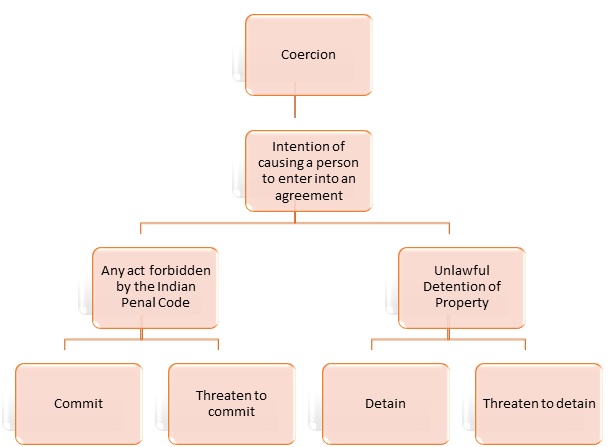The Maharashtra Shakti criminal law (Maharashtra Amendment) Act, 2020
Maharashtra government’s SHAKTI ACT has been in
highlights as it has brought in amendments to certain laws by introducing death
penalty to certain offences related to woman safety. Most of these amendments
have raised previously prescribed punishments for offences under chapter XVI of
Indian Penal Code, 1860.
The reasons given and logic supportive to these
amendments include:
1. Ever
increasing rise in sexual offences.
2.
To
effectively control the heinous sexual offences against women and children.
3.
Proposed
speedy investigation and trial will deter the perpetrators from committing such
crimes.
4.
Recent
inhumane crime in the state of Maharashtra has shocked the social conscience
and hence these circumstances provide for immediate amendments to existing laws
in the form of heavy fines and/ or death penalty.
The most important change these act made is the provision of death penalty for offences under section 376 [Punishment for Rape] and accordingly, the section now reads as
Whoever, except in the cases provided for in
sub-section 2 [ Ss’ 2 is a provision where police officer commits rape] commits
rape shall be punished with life imprisonment or death penalty and shall also
liable for fine.
Previously the section prescribed punishment of
rigorous imprisonment of either description for a term which is not less than
10 years and which may extend to imprisonment for life and shall also be liable
to fine.
The act also introduced sub-section 354E under section
354 [Assault or criminal force to woman with intent to outrage her modesty].
Section 354E has provisions for punishment for harassment of women by any mode
of communication such as telephone, email, social media platforms, or through
any other electronic or digital mode, such harassment is made punishable with imprisonment for a term which shall be up to five years and with fine which
may extend up to five lakhs.
Section 354E also made it an offence that whoever
intentionally forces or compels any woman to respond to any romantic overtures
by threatening to cause hurt or danger of any kind, if such romantic overtures
are not reciprocated, then such acts are punishable on first conviction with
imprisonment for a term which may extend to three years and a fine up to Rupees
one lakh and for second conviction imprisonment for a term which may extend to
five years and a fine up to Rupees Five lakhs.
Not only the provisions for punishment but Shakti Act
has also brought in some significant entries to supplement and fast forward an investigation.
Under section 37 of CrPc [Public when to assist Magistrate and Police] it has
introduced section 37A which makes it mandatory for social media platforms and
other internet/mobile telephone data providers to share data in their
possession with police to assist in the investigation of offences, especially
registered under section 326A [Voluntarily causing grievous hurt by use of
acid], 354, 354E, 376 and few more.
The Shakti Act has also made provisions for preventive
detention up to a period not exceeding fifteen days in an anticipation of any
offence under section 326A, 376, 376A [Punishment for causing death or
resulting in a persistent vegetative state of victim], 376B [Sexual intercourse
by husband upon his wife during separation], 376D [Gang rape], 376DA
[Punishment for gang rape on a woman under sixteen years of age], 376DB
[Punishment for gang rape on a woman under twelve years of age], 376E [Punishment
for repeat offenders], if it appears to a police officer that the commission of
the offence cannot otherwise be prevented. Provided such arrested person has to
be produced before a judicial magistrate with a report in writing stating the
reasons for the continued detention for a period longer than 24 hours.
The literal reading of these amendments suggests that
these efforts have just prescribed more severe punishments for sexual offences
against woman. Simply saying, these amendments replaced the words ‘years’ with
life imprisonment and life imprisonment with death sentence. And this has been done
so with a straightforward aim to “deter crimes”. Now the credible question
that deserves to be delved upon is does the severity of punishment actually
deter criminals or prevents crime from happening? Shouldn’t the state
actually, focus upon the certainty of punishment by improving its police and
judicial administration?
And to answer this question we must take refuge of
psychological research in the field of criminology. The National Institute of
Justice of the US Department of Justice suggests that there is no proof that death penalty deters criminals. It also says laws and policies designed to
deter crime by focusing mainly on increasing the severity of punishment are
ineffective partly because criminals know little about the sanctions for
specific crimes. Prisons are good for punishing criminals and keeping them off
the street, but prison sentences [particularly long sentences] are unlikely to
deter the future. Prisons actually may have the opposite effect: Inmates learn more
effective crime strategies from each other, and time spent in prison may
desensitize many to the threat of future imprisonments.
The above research also says that the certainty of
being caught is a vastly more effective deterrent than even draconian
punishment. The police deter crime when they do things that strengthen a
criminal’s perception of the certainty of being caught. Strategies that use the
police as “sentinels” such as hot spot policing are particularly effective. A
criminal’s behaviour is more likely to be influenced by seeing a police officer
with handcuffs and radio than by a new law increasing penalties.[1]
There are six countries across the globe that carries
death penalty for rape convicts. Pakistan, Saudi Arabia, Iran, United Arab
Emirates, China, and India. It is worth mentioning the experiences in crime
rates these countries witnessed after imposing death penalty for rape convicts.
Zainab Malik of the Justice project Pakistan says “Even though under the law,
rape is treated on a par with terror, nothing has changed. Rape and gang-rape
cases are progressively increasing while conviction rates remain abysmally low.
It is because police are biased against women and are hesitant to even register
cases of gang rape as that would mean the death penalty for a group of men. To
circumvent that often the case would be registered against one man only.”[2]
The Law Commission report on death penalty published
in 2015 also says that the death penalty does not serve the goal of deterrence
any more than life imprisonment. In fact, it fails to achieve any constitutionally
valid penological goal.[3]
If the state actually wants to deter, it should be
using scientific evidence about human behaviour and perceptions about the costs,
risks, and rewards of crime. Most of the time the state advocates for death
penalty by subscribing to such popular opinions and to suffice public outrage
over such crimes.
No doubt it is the state’s responsibility to keep its
citizens especially the woman population safe from such inhumane and heinous
crimes but that has to be done in a very logical way and not by falling a prey
to hue and cry. In this condition, it must be examined that has the state
actually addressed the elephant in the room or is just practising popular but
untenable and unscientific feudal laws which are facially workable and pleasant
to hear but has contrary actual application.
A progressive state like Maharashtra has always
thrived upon and advocated logical exemplars and practices in every area
possible. Even though the large population of the state has been shattered with
insane sexual crimes against women and have experienced extreme turbulence to
its moral and social fabric and now is demanding very stringent actions to these
perpetrators, it is for the state to look for valid research over consequences
of such raised prescription of punishments by keeping its blood cool and calm
and actually doing something which can deter crime in a practical sense.
By keeping these things apart, if there is a one
provision that this Shakti act made which is worth mentioning then it has to be
the introduction of section 357D [Institutional services to victims]in CrPc.
And in doing so the state has been successful in recognizing the agony and
affliction the victim must be going through after such a heinous crime and
importance of keeping the victim morally and emotionally tenable to prosecute
the offender and get the justice to be served. Under section 357D, the Shakti Act
says, All institutions set up for providing shelter, relief, rehabilitation, etc
to victims of offences under sections 326A, 326B, 376, 376AB, 376B, 376C, 376D,
376DA, 376DB or 376E of the Indian Penal Code, 1860 by the central government
or the State Government or local bodies or any other person shall immediately
provide shelter, relief and rehabilitation including but not limited to
services and facilitation for medical or psychiatric treatment, psychiatric
counseling, legal aid and financial aid and any other service
required for the same to the victims within
twenty-four hours of the victim approaching the said institution by self or
other means.
Followed are the amendments Shakti Act made:
The Indian Penal Code, 1860
|
Section |
Previous prescription of punishment |
Amended prescription of punishment |
|
1.
Introduction of
section 166Ad- Punishment for failure by public servant to assist
investigation. 2.
Introduction of
section 166C- Punishment for not providing services to victim 3.
Introduction of
section 175A- Punishment for failure to share data 4.
Introduction of
section 176A- Punishment for failure to give notice or information 5.
Section 326A 6.
Section 326B 7.
Section 376D 8.
Section 376DA 9.
Section 376DB 10. Section 376E |
- - - - imprisonment of
either description for a term which shall not be less than ten years but
which may extend to imprisonment for life and with fine payable to the victim Imprisonment for a term which
shall not be less than five years but which may extend to seven years, and
shall also be liable to fine. rigorous
imprisonment for a term which shall not be less than twenty years, but which
may extend to life imprisonment and with fine payable to the victim to meet
medical and rehabilitation expenses. life imprisonment
and with fine payable to the victim to meet medical and rehabilitation
expenses. life
imprisonment and with fine payable to the victim to meet medical and
rehabilitation expenses Life
imprisonment or death |
Imprisonment may extend to 2 years and shall also be
liable to fine. Imprisonment may extend to 1 year or with fine or
with both Fine of Rupees Ten Lakhs Simple imprisonment may extend up to six months or
with fine or with both Life Imprisonment or death and fine to be payable to
the victim Imprisonment for not less than 14 years which may
extend to 20 years Life imprisonment or death and a fine up to 20 Lakhs
to be paid to the victim Life imprisonment or death and fine up to 25 Lakhs
to be paid to the victim Life imprisonment or death and fine up to 25 Lakhs
to be paid to the victim Death sentence |
[1]
Five things about deterrence: National
institute of Justice
[2] India death penalty: Does it actually
deter rape?- 31 July 2018, BBC NEWS.
[3] Law Commission Report on Death
Penalty- Editor, SCC Blog.




Comments
Post a Comment